Let's talk...
About the child’s feelings: We can read the story with our children several times. We then follow the illustrations and discuss them as an expressive panel and talk about the feelings of both the child and the grandfather during their joint activities.
About the relationship with the grandfather: We can talk to our child about the things he loves about his grandfather and grandmother, and the things that sometimes bother him.
About family relationships: The book presents the child’s experience of spending enjoyable time with her grandfather. We can talk to our children about the shared activities that our children love to do with their grandparents, aunts, uncles, and extended family.
Let's create...
Let’s prepare an album of the most beautiful moments with family members and relatives.
Let’s plan and create a house for our favourite pet with the help of grandparents.
Let's communicate...
Let’s visit our grandparents and initiate a fun activity together, such as gardening, going for a nature walk, playing chess, and more.
Let’s talk...
Fun experiences: We can follow the drawings and accompany the girl and her dog on their journey in nature. We can list the things the girl did, asking our child about the activities they would like to do and the places they would like to visit in their nearby surroundings.
Gratitude and giving thanks: We can talk to our child about gratitude. Together, we list the blessings, starting with ourselves and our social relationships, then moving on to nature and our surroundings.
Let’s create...
Drawing the world around us: We can gather coloured paper and pens, go outside to the garden or street, and “hunt” for colours. We can suggest to our child to draw lines in the shape they choose and select colours that resemble what they see in the world around them. After finishing the drawing, we can hang it in our child’s room.
Let’s initiate...
We communicate and preserve nature: We can think of small actions that can make the world around us a little more beautiful. We can plant some flowers in the neighbourhood, keep nature clean during our walks, plant trees, or take care of a tree in the nearby nature throughout the year.
Let’s enrich our language...
We enrich our vocabulary and introduce our children to the world of animals and their categories—insects, mammals, amphibians, reptiles, birds, and more.
Let’s explore and communicate...
Camping trip in nature: We can explore our country, admire its landscapes, learn about its plants, and listen to its sounds.
Let’s Talk
- About the title: we can ask our child what is meant by “Book of Questions.”
- About Nature: The children explore nature in their immediate surroundings, engaging in a conversation about their favorite places in nature and the similarities and differences between the nature they see and the one presented in the book. We can ask them: How do you feel when we go on a hike in nature?
Let’s Create
- “My Little Treasures” – each time our family goes on a hike in nature, we can gather things that pique our children’s curiosity and amazement, and we can talk about them together.
- The book’s illustrations capture scenes up close and from a distance, using collage techniques. With our child, we can color and cut colored paper in various shapes, forming a collage of the surrounding nature by pasting the paper cutouts onto a cardboard sheet.
Let’s Play and Have Fun
We can listen to the sounds of nature, discovering them, and engaging in a relaxation and meditation activity afterward.
Let’s Explore
We can ask questions about natural phenomena, searching for answers with our child: Why doesn’t the moon fall? How are stars formed? Why do tree leaves fall?
Let’s Enrich our Language
- The book is rich in thought-provoking questions, full of imagination, similes, and metaphors. For example: “Is the soil the skin of the world?” We can talk with our child about the similarities and differences between soil and skin, and why the children used this metaphor. We can ask our children to count the similarities and differences in each question.
- We can also create questions in the style of the children’s questions: Are leaves the hair of trees…? Are stones…?
Let’s look together...
Let’s look together at the illustrations on pages 6 + 7. What other creatures can we find in the Wildlife Museum? If you’ve ever visited one and took pictures there, now is the time to look at these pictures!
What insects...
What insects did George collect in bottles and jars? Can we distinguish some of them? We can talk about what would happen to insects if we locked them in closed bottles.
We may want...
We may want to accompany our child on a tour in the garden or outside the house, looking for insects in the grass, on the trees, and under the rocks in a safe way that does not expose us to danger. It is interesting for our child to explore the insects through a magnifying glass, photograph them, and search for their names and characteristics.
Bees, ladybirds, and ants...
Bees, ladybirds, and ants are beneficial to nature, and therefore to humans. Do we know other beneficial insects? which insects are harmful?
George enjoys...
George enjoys accompanying his grandfather every week on a new adventure. What “adventures” does our child like to do with their grandfather/grandmother, or any other family member?
Together, we can look...
Together, we can look at the drawing of the sanctuary that George and his grandfather built. How does it attract beneficial insects? We may want to design our own reservation and draw it on a piece of paper.
Each picture in...
Each picture in the book includes many small things that can catch our children’s attention while we read the book together. Encourage them to describe these drawings using sentences that begin with the phrase “I see…”
We can chat...
We can chat with our child about an older person who they feel comfortable with and whose company they enjoy. S/he may be a member of the family or an outsider. What do they like to do with him/her?
The girl’s picnic...
The girl’s picnic with her grandfather extends from morning to evening. Together, we can trace the elements in the pictures of the book that indicate the change of time in the story. What evening rituals do we do in our family to end the day?
Our child may...
Our child may want to design a small bag, on which they will stick the phrase “my tiny perfect things.” Every time our family goes out for a walk in nature, our child can collect little things that intrigue their curiosity, and we can then chat about them with our child.
Perhaps they want...
Perhaps they want to draw or photograph these things instead of collecting them, and prepare a small book in which they describe what they found.
What do the lines...
What do the lines on tree leaves look like? We can collect leaves together and place a white paper on top of each one, then we can follow the lines with a colored pencil over the paper as we press hard, and the details of the leaves will then appear before our eyes!
It is nice...
It is nice to involve our child in the reading process. For example, s/he can read some words out loud (blue, water, land…). The rhyming in the text helps us with various language games, such as sentence completion: How sweet is the scent of flowers in May/the garden smells great all —-. We can choose simple words from the text, such as large, drawings, etc. and think of words that have the same sounds (rhyme).
We can supply...
We can supply ourselves with papers and colored pencils, and go out together to the garden of the house or the street in the neighborhood for a “Color Hunt.” We ask our child to draw lines in different shapes with colors that match the colors he sees in the world around him. Surely, s/he will have a nice painting to hang in his/her room.
Together, we can...
Together, we can make a “family drawing.” The child can draw a line on which family members add other lines, forming one large drawing that everyone signs with pride!
Kids can enjoy...
Kids can enjoy creating a “magical drawing.” We fill a sheet of cardboard with adjoining lines of all colors. We cover the drawing using a black wax or oil-based color. Then, we use a thin wooden stick or the edge of a coin to draw on the black cardboard, so the colors underneath can stand out.
We can do...
We can do good deeds. We think of small actions that can make the world around us a little more beautiful. We might plant some roses in the neighborhood, help an elderly neighbor carry his things, surprise a family member with something he loves, or just smile at those we pass by on the road.
The painter painted...
The painter painted the waves in green and lilac, the stars in pink, and created strange creatures. It is fun to shape our special strange creature with dough or with colorful playdough, and imagine what it can do!
We stop at...
We stop at the first page and explain to our child that the gifts Rafif received are different from the gifts that s/he knows. How is it different? We count the gifts together after reading the story.
What things...
What things make us happy at home, in kindergarten, in the neighborhood, and in nature? Our child may want to draw one of them.
We look at...
We look at the painting on pages 10 and 11 together: What does Rafif’s breakfast consist of? What is our breakfast like?
Rafif was happy...
Rafif was happy with her gifts. How does her joy appear in every drawing? What do we do when we are happy?
We can think...
We can think of a free gift that we would like to give to someone we love. It could be a drawing we created, or a flower we picked from our garden.
The book’s drawings...
The book’s drawings are styled as a collection/collage. We can cut different colored paper with our child, and, by using our imagination, we can make a drawing from scraps of paper pasted onto a cardboard.
When reading for...
When reading for the first time, we can pause on the pages where a part of the insect’s body or a hidden animal appear. We can encourage our child to guess who the animal is. What helps us guess?
The story’s language...
The story’s language depends on rhyme. We can play the “Rhyming Pairs” game. We say a word, and our child must find another word that rhymes with it, such as: Run/ Sun, or a rhyming adjective, such as: Fun Run/One Sun.
We can talk...
We can talk about the value of hospitality. How do we welcome guests in our family?
Together, we can...
Together, we can look at the last drawing in the book. What does each friend of Rima do in the living room?
Which flowers...
Which flowers and plants do we recognize in the drawings? Which do we see around us in springtime? We can try to name the kinds of trees we see (such as cypress, palm trees, etc.). We can also name other kinds of trees which grow in the wilderness of our country, such as oaks and willows.
It is fun to...
It is fun to go out on a walk in nature during spring, and to look together at the plants and living creatures that surround us. Our child can photograph things that catch their eyes, and then we can collect these pictures in a simple paper or electronic album entitled “(the child’s name)’s Trip”. Our child will definitely be happy to share it with their friends and family.
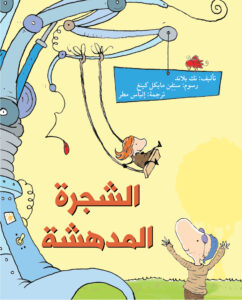 The Amazing Tree
The Amazing Tree 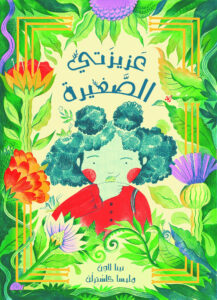 Dear Little One
Dear Little One 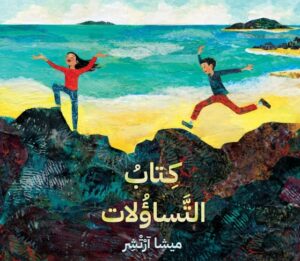 Book of Questions
Book of Questions 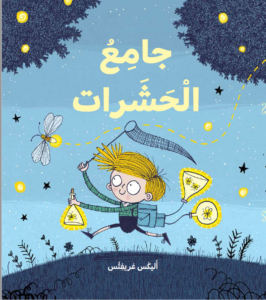 The Bug Collector
The Bug Collector 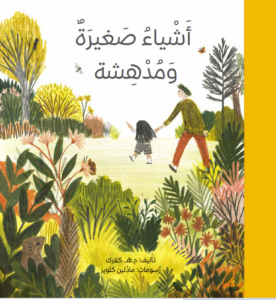 Tiny perfect things
Tiny perfect things 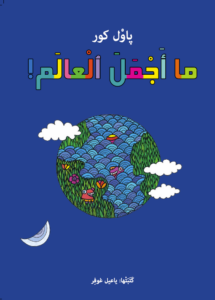 Beauty of the World
Beauty of the World 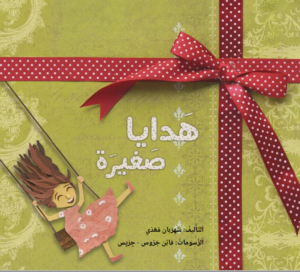 Small Presents
Small Presents 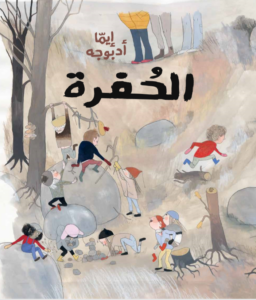 The Hole
The Hole 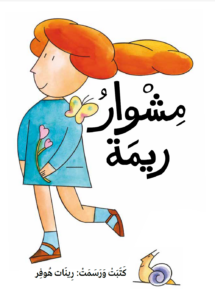 Rima’s walk
Rima’s walk 
